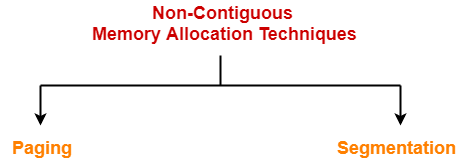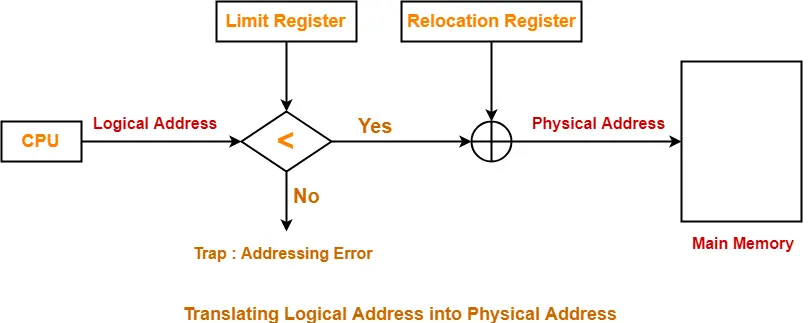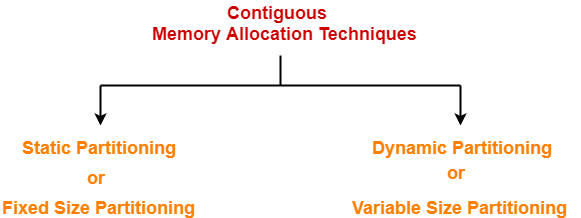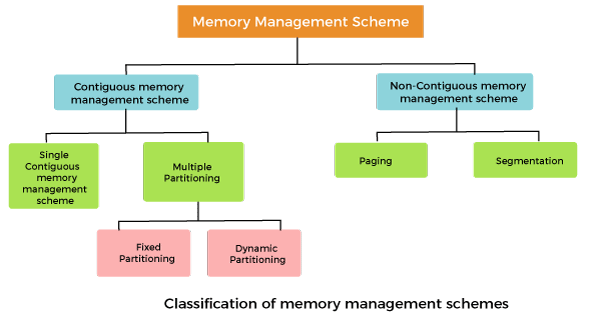Explain Different Types of Memory Allocation Techniques
Suppose the size of the process is lesser than the size of the partition in that case some size of the partition gets. Your short-term memory allows you to process and understand the information in an instant.
The programs are allocated with memory at run time.

. Or just give a musical tune to what you are trying to remember. We have already seen what how useful can a rhyming mnemonic be. Static memory allocation allocated by the compiler.
For example if a. If in a case size of a process is more than that of a. In this method all types of computers memory except a small portion which is reserved for the OS is available for one application.
Application-level dynamic memory allocation using familiar operations such as the malloc call in C or the new operator in C often allocate large blocks from the OS and then subdivide them. Dynamic RAM is the commonly used RAM in the computers. Realloc reallocates the memory occupied by malloc or calloc functions.
Paged memory allocation is the process of storing a portion of an executing process on disk or secondary memory. Efficient disk space utilization. Music Mnemonics Technique Give a music tune to what you want to memorize.
Types of Memory Management. Mainly a system uses one method for all files within the system. All the three methods have their own advantages and disadvantages as discussed below.
Malloc allocates single block of requested memory. There are mainly three methods of file allocation in the disk. Memory than it had when swapped out Swapping is only possible if dynamic relocation is used.
Multilevel Indexed allocation. 5 marks An operating system kernel that allows multi-tasking needs processes to have five 5 states. Users job is limited to the size of available memory.
These methods provide quick access to the file blocks and also the utilization of disk space in an efficient manner. Each method has its advantages and disadvantages. Each different type of memory we have is important and they all have various functions.
9 Virtual Memory In a virtual memory the process may see a memory that is bigger than the physical memory. Paging is one of the types of memory management. Compile-time or Static allocation.
When you read a paragraph in a book and understand it thats your short-term memory at work. Multiple-partition Allocation One of the simplest methods for allocating memory is to divide memory into several fixed sized partitions. Linked List Allocation In this scheme each file is a linked list of disk blocks which.
These techniques can often be used in combination. There are two variations of this. Once the program has finished its operation or is idle the memory is released and allocated to another program or merged within the primary memory.
Free frees the dynamically allocated memory. The main idea behind contiguous allocation methods is to provide. The stack allocation is a runtime storage management technique.
Explain the five 5 states of a process. These memory divisions are known as partitions. Limitation on the size of the process.
Contiguous Allocation In this scheme each file occupies a contiguous set of blocks on the disk. To manage how a computers memory resources are shared. However many of these techniques can also be used to manage virtual memory space.
Calloc allocates multiple block of requested memory. Disadvantages of Fixed-size Partition Scheme. Thus locals are bound to fresh storage in each activation because a new activation.
The activation records are pushed and popped as activations begin and end respectively. List and describe the four memory allocation algorithms. Now lets have a quick look at the methods used for dynamic memory allocation.
Single Contiguous Allocation. Fixed Equal-size Partitions It divides the main memory into equal number of fixed sized partitions operating. DDR2 DDR3 DDR4 are the available versions of the DRAM each efficient according to their number.
There are following methods which can be used for allocation. There are two types of memory allocations possible in C. Allocation method provides a way in which the disk will be utilized and the files will be accessed.
In the first fit algorithm the allocator keeps a list of free blocks known as the free list and on receiving a request for memory scans along the list for the first block that is large enough to satisfy the request. 2 Paging Paging is a technique in which the main memory of computer system is organized in the form of equal sized. A Dispatcher b CPU Scheduler c Context Switching d Cache Memory e Deadlock Question 2.
A related technique is music mnemonic this is to convert what we what to memorize into a piece of music. Memory allocation has two core types. The key to virtual memory is to distinguish between the addresses used by the program and the physical addresses.
Exact size and type of memory must be known at compile time. An embedded system also runs on a single application. The program is allocated memory at compile time.
Techniques can all be viewed as operating in the physical memory space. Types of Memory Allocation. These techniques offer different approaches to memory management.
Run-time or Dynamic allocation using pointers. Compile-time or Static allocation. It is the easiest memory management technique.
Static memory allocation is performed when the compiler compiles the program and generate object files linker merges all. There are different types of file allocation methods but we mainly use three types of file allocation methods. Storage for the locals in each call of the procedure is contained in the activation record for that call.
Memory Management Techniques in Operating System 1 Segmentation Segmentation refers to the technique of dividing the physical memory space into multiple blocks. Unlike earlier times when the computers used to use single data rate SDR RAM now they use dual data rate DDR RAM which has faster processing ability. Your most treasured and important memories are held in your long-term.
For example MS-DOS operating system allocates memory in this way. Memory partitioning is the system by which the memory of a computer system is divided into sections for use by the resident programs.

Contiguous Memory Allocation Dynamic Partitioning Gate Vidyalay

Memory Management In Os Contiguous Swapping Fragmentation

Paging Memory Management Operating System Gate Vidyalay

Contiguous Memory Allocation Dynamic Partitioning Gate Vidyalay


Comments
Post a Comment